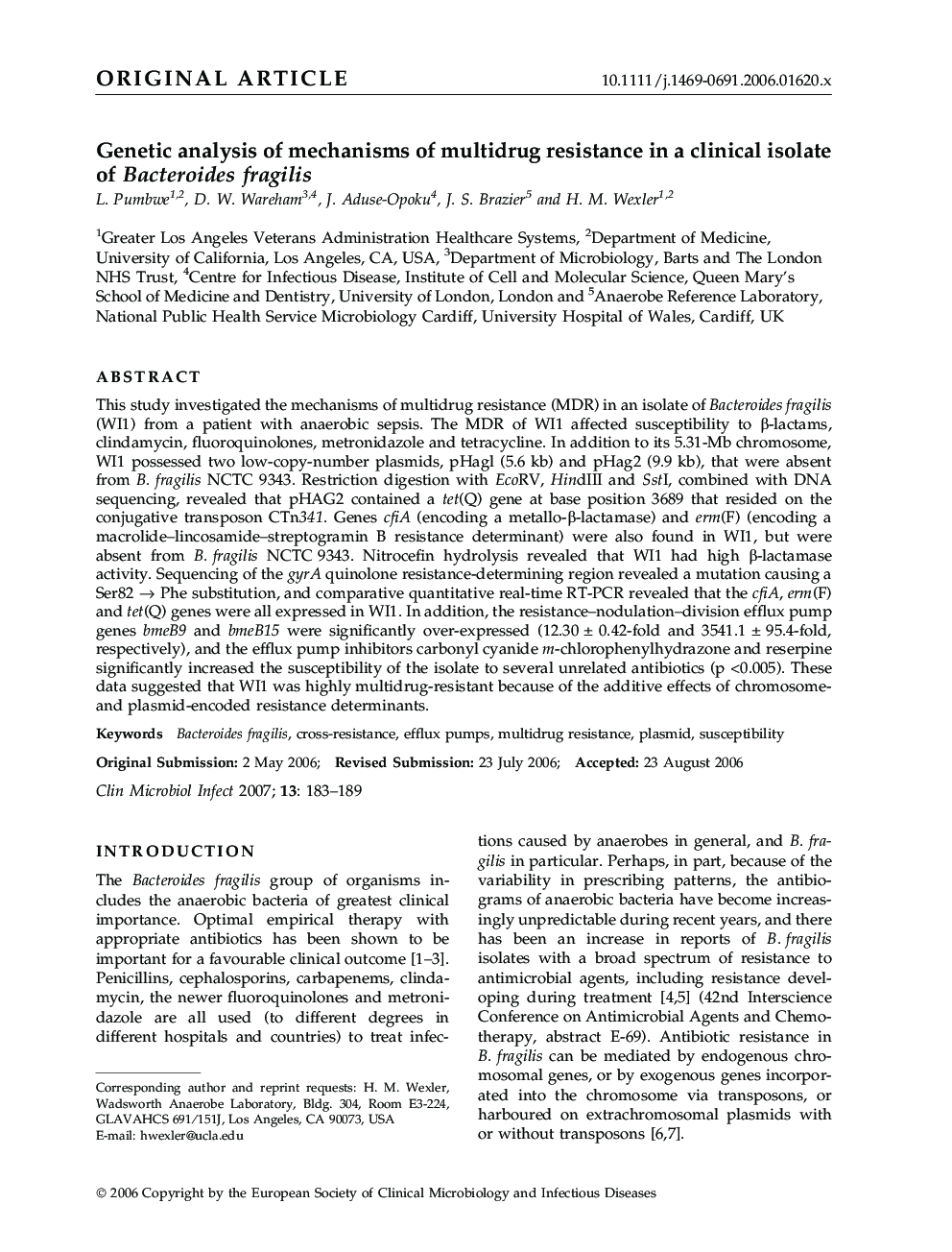| Article ID | Journal | Published Year | Pages | File Type |
|---|---|---|---|---|
| 3398492 | Clinical Microbiology and Infection | 2007 | 7 Pages |
This study investigated the mechanisms of multidrug resistance (MDR) in an isolate of Bacteroides fragilis (WI1) from a patient with anaerobic sepsis. The MDR of WI1 affected susceptibility to β-lactams, clindamycin, fluoroquinolones, metronidazole and tetracycline. In addition to its 5.31-Mb chromosome, WI1 possessed two low-copy-number plasmids, pHagl (5.6 kb) and pHag2 (9.9 kb), that were absent from B. fragilis NCTC 9343. Restriction digestion with EcoRV, HindIII and SstI, combined with DNA sequencing, revealed that pHAG2 contained a tet(Q) gene at base position 3689 that resided on the conjugative transposon CTn341. Genes cfiA (encoding a metallo-β-lactamase) and erm(F) (encoding a macrolide–lincosamide–streptogramin B resistance determinant) were also found in WI1, but were absent from B. fragilis NCTC 9343. Nitrocefin hydrolysis revealed that WI1 had high β-lactamase activity. Sequencing of the gyrA quinolone resistance-determining region revealed a mutation causing a Ser82 → Phe substitution, and comparative quantitative real-time RT-PCR revealed that the cfiA, erm(F) and tet(Q) genes were all expressed in WI1. In addition, the resistance–nodulation–division efflux pump genes bmeB9 and bmeB15 were significantly over-expressed (12.30 ± 0.42-fold and 3541.1 ± 95.4-fold, respectively), and the efflux pump inhibitors carbonyl cyanide m-chlorophenylhydrazone and reserpine significantly increased the susceptibility of the isolate to several unrelated antibiotics (p <0.005). These data suggested that WI1 was highly multidrug-resistant because of the additive effects of chromosome- and plasmid-encoded resistance determinants.
